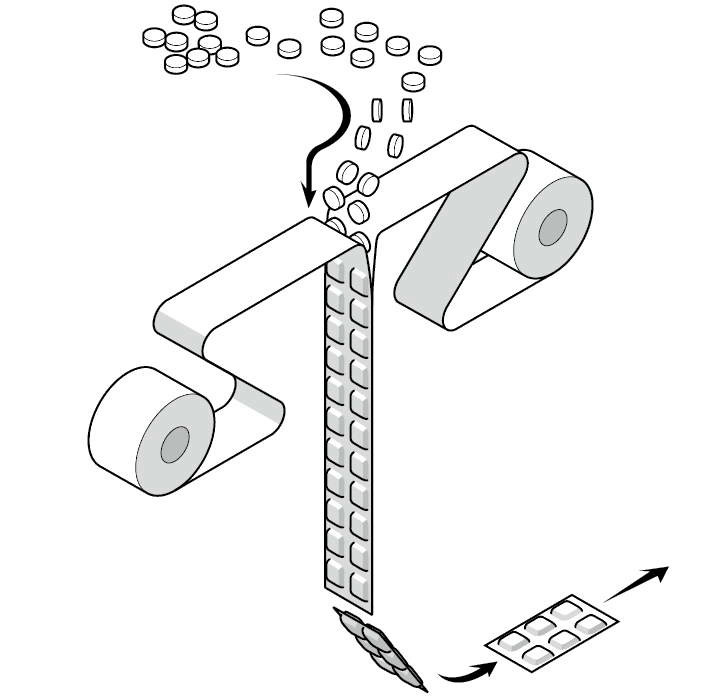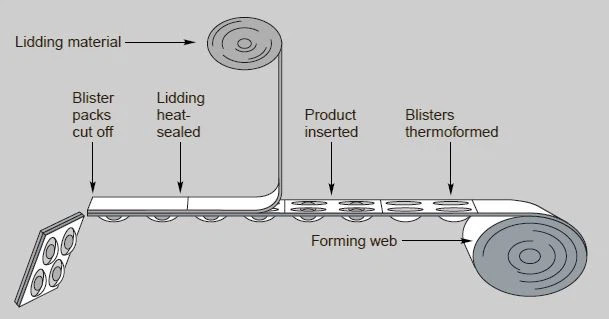
The Difference Between Strip Packaging vs Blister Packaging
-
Author: Greenkitesvn.com
/
In the pharmaceutical industry, packaging is crucial. It serves as a shield of protection, keeping the integrity and quality of pharmaceuticals and assuring their safe delivery to patients. It goes beyond simple confinement.
The ideal packaging solution improves patient convenience and adherence in addition to protecting the pharmaceutical products. Strip packaging and blister packaging are two frequently used packaging techniques that will be covered in this article. Due to these approaches' effectiveness at meeting diverse packaging needs in the pharmaceutical business, they have grown significantly in popularity. This article's main goal is to provide a thorough comparison and contrast between blister packaging and strip packaging.
The pharmaceutical industry can learn a lot about these options by comparing their features, advantages, drawbacks, and other factors, which will help them decide which packaging choice is best for their particular drugs. Understanding the subtle differences between strip packaging and blister packaging is essential in a field where accuracy, safety, and patient happiness are top priorities.
Let's thus set out on this adventure to investigate and assess these two packaging strategies, enabling pharmaceutical companies to make the best decisions that are in line with their demands and those of their patients.
Definition of Strip Packaging
The term "strip packaging" describes a technique of drug packaging in which individual doses are contained within a continuous strip of flexible material, typically made of aluminum or plastic.

Alternative packaging techniques, including blister packaging, may be more suitable in these circumstances.
Potential for Contamination During Handling
Since strip packaging involves individual doses connected in a continuous strip, there is a risk of contamination if proper handling practices are not followed. Improper storage or handling can lead to contamination of multiple doses if one section of the strip is compromised. Pharmaceutical companies must ensure strict adherence to quality control measures to mitigate this risk.
The pharmaceutical industry can assess if this approach fits with their product features, manufacturing procedures and patient requirements by taking into account the benefits and limitations of strip packaging.
We will discuss another common packaging technique, blister packaging, in the section that follows.
Definition of Blister Packaging
Blister packaging refers to a specific type of packaging that encompasses an object (drugs most times) and is sealed to a cardboard sheet. It is commonly utilized for containing and presenting various products, including consumer goods, food items, and pharmaceuticals.

The blister pack consists of a cavity or pocket formed from a pliable material, often a thermoformed plastic, along with a backing composed of paperboard or a sealing layer made of aluminum foil or plastic.
Advantages of Blister Packaging
- Individual Unit-Dose Packaging
Blister packaging offers the advantage of individual unit-dose packaging, where each dose is isolated and protected, maintaining its integrity until consumption. This ensures accurate dosing and reduces the risk of dosage errors, especially for medications with complex dosage regimens.
- Enhanced Product Protection and Stability
Blister packaging provides excellent protection against various environmental factors, including moisture, light, and air. The blister compartments create a barrier that shields the medication from external elements, preserving its stability and efficacy throughout its shelf life. This is particularly important for medications that are sensitive to moisture or require light protection.
- Improved Medication Adherence
Blister packaging can significantly enhance medication adherence among patients. The clear visibility of each dose and the inclusion of labeling information, such as dosage instructions, expiry dates, and medication names, helps patients easily identify and track their medication intake. This promotes adherence to prescribed treatment regimens, reducing the risk of missed or incorrect doses.
Limitations of Blister Packaging
- Higher Production Costs
Blister packaging generally involves a more complex manufacturing process compared to strip packaging, which can result in higher production costs. The need for specialized equipment, materials, and increased labor may contribute to elevated packaging expenses for pharmaceutical companies.
- Potential Difficulty for Patients with Dexterity Issues
Blister packaging often requires manual effort to push through the individual compartments or "punch out" the doses. This can pose challenges for patients with limited dexterity or strength, such as the elderly or individuals with certain disabilities.
Ensuring accessibility and ease of use for all patient populations should be considered when opting for blister packaging.
- Reduced Flexibility in Packaging Customization
Unlike strip packaging, which allows for continuous customization, blister packaging offers limited flexibility in terms of altering the packaging size or shape once it is sealed. This can be a limitation when dealing with medications that have unique shapes or larger dimensions, as they may not fit well within standard blister pack designs.
Pharmaceutical companies can determine if blister packaging is appropriate for their specific drugs, customer base, and production capabilities by weighing its benefits and drawbacks.
The comparison between strip packaging vs blister packaging will be the main topic of the following paragraph, which will assist in making the best packaging method choice.


Comparison between Strip Packaging and Blister Packaging
Packaging Efficiency and Cost-Effectiveness
- Strip Packaging: Strip packaging offers cost-effective advantages due to its efficient production process and reduced material requirements.
- Blister Packaging: Blister packaging may involve higher production costs due to its more complex manufacturing process and specialized equipment.
Product Protection and Stability
- Strip Packaging: Strip packaging provides enhanced protection against moisture and light, preserving the medication's quality and efficacy.
- Blister Packaging: Blister packaging offers excellent product protection, creating a barrier against external factors such as moisture, light, and air, ensuring stability and shelf life.
Patient Convenience and Medication Adherence
- Strip Packaging: Strip packaging offers ease of use for patients with its individualized doses and clear labeling, promoting accurate dosing and portability.
- Blister Packaging: Blister packaging improves medication adherence through individual unit-dose packaging, clear labeling, and visual tracking of medication intake.
Customization and Flexibility
- Strip Packaging: Strip packaging allows for continuous customization and flexibility in terms of size, shape, and accommodating multiple medications.
- Blister Packaging: Blister packaging has limited flexibility once sealed, making customization challenging for unique medication shapes or larger dimensions.
Factors to Consider When Choosing Between Strip Packaging and Blister Packaging
- Type of Medication
Different medications have varying requirements in terms of dosage, stability, and packaging compatibility. Consider the specific characteristics of the medication, such as sensitivity to moisture, light, or air, and assess which packaging method better meets those requirements.
- Target Patient Population
Understand the demographics and needs of the intended patient population. Factors to consider include age, physical abilities, and potential challenges they may face in accessing and using the medication. Determine which packaging method aligns with the convenience and ease of use for the target patients.
- Regulatory Requirements
Familiarize yourself with the relevant regulatory guidelines and requirements for pharmaceutical packaging. Different regions or countries may have specific regulations concerning packaging materials, labeling, child-resistant features, and tamper-evident seals. Ensure compliance with these regulations when choosing the packaging method.
Hot products
Promotions every day


